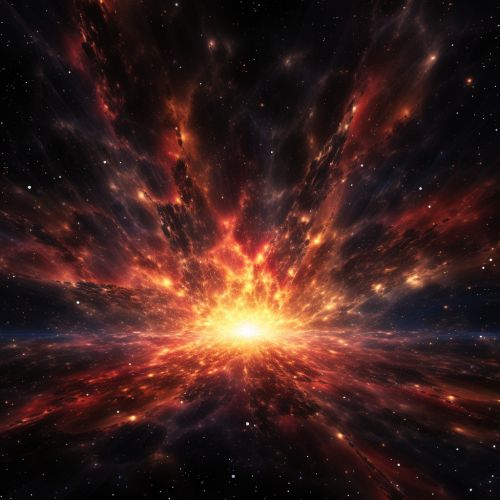Big Bang Theory
Introduction
The Big Bang Theory is a cosmological model that explains the existence of the observable universe. This theory posits that the universe originated from a singularity, a point of infinite density and temperature, approximately 13.8 billion years ago. The Big Bang Theory is widely accepted among scientists due to its ability to accurately predict and explain a wide range of phenomena, including the abundance of light elements, the cosmic microwave background radiation, and the large scale structure of the cosmos.


Historical Development
The Big Bang Theory was first proposed in the 1920s by Belgian physicist Georges Lemaître. Lemaître's theory was based on the solutions to Einstein's field equations of general relativity, which predicted an expanding universe. However, the concept of a universe that was expanding from a singularity was not widely accepted until the 1960s, when the discovery of the cosmic microwave background radiation provided empirical evidence for the theory.
Evidence for the Big Bang Theory
There are several key pieces of observational evidence that support the Big Bang Theory. These include:
- Cosmological Redshift: The observation that light from distant galaxies is redshifted, indicating that these galaxies are moving away from us. This is interpreted as evidence for the expansion of the universe.
- Cosmic Microwave Background (CMB): The discovery of the CMB in 1965 provided strong evidence for the Big Bang Theory. The CMB is radiation that was emitted shortly after the Big Bang, and its discovery confirmed that the universe began in a hot, dense state.
- Big Bang Nucleosynthesis: The theory predicts the abundance of light elements in the universe (hydrogen, helium, and lithium). Observations of these abundances are consistent with the predictions of the Big Bang Theory.
- Large Scale Structure of the Universe: The distribution of galaxies and galaxy clusters on large scales is consistent with the predictions of the Big Bang Theory.
Theoretical Framework
The Big Bang Theory is based on the principles of general relativity, which describes gravity as a curvature of spacetime caused by mass and energy. In the context of the Big Bang Theory, general relativity predicts that the universe is expanding, and that it originated from a singularity.
The theory also incorporates the concept of cosmological inflation, a period of rapid expansion that occurred shortly after the Big Bang. Inflation is proposed to explain several features of the universe, including its large scale uniformity and the absence of magnetic monopoles.
Limitations and Criticisms
While the Big Bang Theory is widely accepted, it is not without its limitations and criticisms. For example, the theory does not explain what caused the Big Bang, or what (if anything) existed before it. Furthermore, the theory relies on the concept of dark energy and dark matter, which are not yet fully understood.
Future Directions
Current research in cosmology is focused on refining the Big Bang Theory and addressing its limitations. This includes studying the nature of dark energy and dark matter, investigating the possibility of a multiverse, and exploring theories of quantum gravity, such as string theory and loop quantum gravity.
